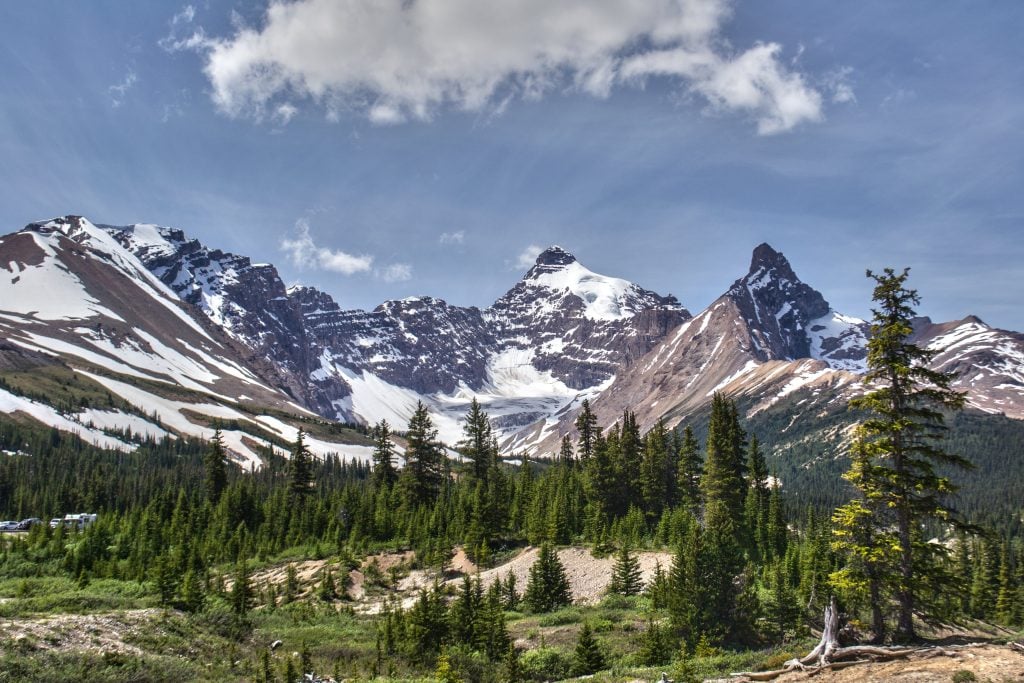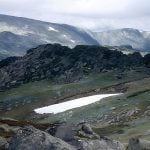Mountains of North America: National Park Paradise
North American mountains form the backbone of the continent’s natural beauty and diversity. Spanning a vast range of altitudes and geological histories, from the towering peak of Denali to the rolling hills of Appalachiai, Mountains of North America: National Park Paradise
What is the highest mountain in North America?
Denali, located in Alaska, is the highest mountain in North America. It has a summit elevation of 6,190 meters (20,310 feet), making it the third highest mountain on Earth after Mount Everest and K2.
Which are the other major mountain ranges in North America?
Aside from
Denali, North America is home to several other significant mountain ranges, including:
Rocky Mountains
The Rocky Mountains, also known as the Rockies, are a major mountain range and the largest mountain system in North America. Stretching over 4,800 kilometers (3,000 miles) from northern British Columbia in Canada to New Mexico in the United States, the Rockies offer stunning scenery, diverse ecosystems, and a rich history.
Here are some key facts about the Rocky Mountains:
Formation: The Rockies were formed over millions of years through plate tectonics and continental collisions. This resulted in various rock formations, including granite, sandstone, and limestone, creating the mountains’ characteristic layered and jagged peaks.
Climate and Vegetation: The climate and vegetation in the Rockies vary greatly depending on factors like altitude and latitude. Lower-altitude regions feature temperate forests and meadows, while higher elevations are dominated by alpine meadows and snow-capped peaks. This diversity supports a rich biodiversity, harboring numerous endemic plant and animal species.
Water Source and Economic Importance: The Rocky Mountains serve as a crucial water source for North America. Melting snow and glaciers feed many rivers in the region, providing vital water for agriculture, drinking water, and industry. The mountains also support various economic activities such as mining, forestry, and tourism.
National Parks and Recreation: The beauty and diversity of the Rockies have made it home to numerous national parks and recreation areas. World-renowned parks like
Yellowstone National Park,
Yosemite National Park, and
Banff National Park attract millions of visitors each year. The mountains also provide an ideal setting for outdoor activities like hiking, camping, skiing, and fishing.
Environmental Issues: The Rocky Mountains face various environmental challenges, including climate change, pollution, and habitat destruction. These issues threaten the biodiversity and water resources of the mountains. Therefore, sustainable management and conservation efforts are crucial to protecting this unique ecosystem.
The Rocky Mountains are an iconic symbol of North America’s natural beauty and heritage. Their stunning landscapes, rich biodiversity, and historical significance make them a treasure to be preserved and sustainably used for future generations.
Appalachian Mountains
The Appalachian Mountains are a mountain range stretching for 2,400 kilometers (1,500 miles) along the eastern coast of the United States, extending from Newfoundland and Labrador, Canada to Alabama. With their ancient, rounded peaks, lush forests, and rich history, these mountains offer a majestic display of nature.
Geological Formation: The Appalachian Mountains consist of Paleozoic rocks formed millions of years ago. These rocks were created through the collision and erosion of continental plates. The mountains’ rounded peaks are a result of prolonged erosion over time.
Climate and Vegetation: The Appalachian Mountains experience a humid temperate climate, characterized by abundant rainfall and moderate temperatures. The mountains are home to a diverse range of broadleaf forests, coniferous forests, and meadows.
Biodiversity: The Appalachian Mountains harbor a rich biodiversity, supporting numerous endemic plant and animal species. These include black bears, deer, foxes, and a variety of bird species.
Sierra Nevada Mountains
The Sierra Nevada is a mountain range that stretches for 400 kilometers (250 miles) in the state of California, United States. With its towering granite peaks, glacier-carved valleys, and giant sequoia trees, the Sierra Nevada is home to breathtaking natural beauty.
Geological Formation: The Sierra Nevada was formed millions of years ago through plate tectonics and continental collisions. These geological processes created the mountains’ characteristic granite rock and towering peaks.
Climate and Vegetation: The Sierra Nevada experiences a Mediterranean climate, characterized by dry summers and snowy winters. The mountains support a diverse range of vegetation, including ponderosa pine forests, alpine meadows, and giant sequoia groves.
Biodiversity: The Sierra Nevada is home to a rich biodiversity. The mountains support numerous endemic plant and animal species. These include bears, mountain lions, deer, and a variety of bird species.
Economic Importance: The Sierra Nevada plays a significant role in the regional economy. The mountains support various economic activities such as tourism, forestry, and agriculture.
National Parks: The Sierra Nevada is home to many national parks. These include Yosemite National Park, Sequoia National Park, and Kings Canyon National Park.
Coastal Mountains
The Coastal Mountains are a mountain range that stretches for 4,800 kilometers (3,000 miles) along the western coast of North America, from Canada to the United States. With their rugged terrain, pristine wilderness, and rich biodiversity, the Coastal Mountains offer a unique destination for nature enthusiasts and adventure seekers.
Geological Formation: The Coastal Mountains were formed millions of years ago through plate tectonics and continental collisions. These geological processes created the mountains’ characteristic granite and basalt rocks and towering peaks.
Climate and Vegetation: The Coastal Mountains experience a mild oceanic climate, characterized by abundant rainfall and moderate temperatures. The mountains support a diverse range of vegetation, including lush rainforests, alpine meadows, and coniferous forests.
Biodiversity: The Coastal Mountains are home to a rich biodiversity. The mountains support numerous endemic plant and animal species. These include bears, wolves, deer, and a variety of bird species.
Economic Importance: The Coastal Mountains play a significant role in the regional economy. The mountains support various economic activities such as tourism, forestry, and mining.
National Parks: The Coastal Mountains are home to many national parks. These parks include Yosemite National Park, Redwood National Park, and Glacier National Park.
How were the mountains in North America formed?
The formation of North America’s mountains can be attributed to various geological processes. Some ranges, like the Rockies and Sierra Nevadas, were formed through plate tectonics and continental collisions. Others, like the Appalachians, were created by volcanic activity and folding during earlier geological periods.
What kind of climates do the mountains in North America experience?
Mountains in North America exhibit diverse climates. Higher altitudes feature tundra and alpine climates, while the slopes and valleys experience milder temperatures.





